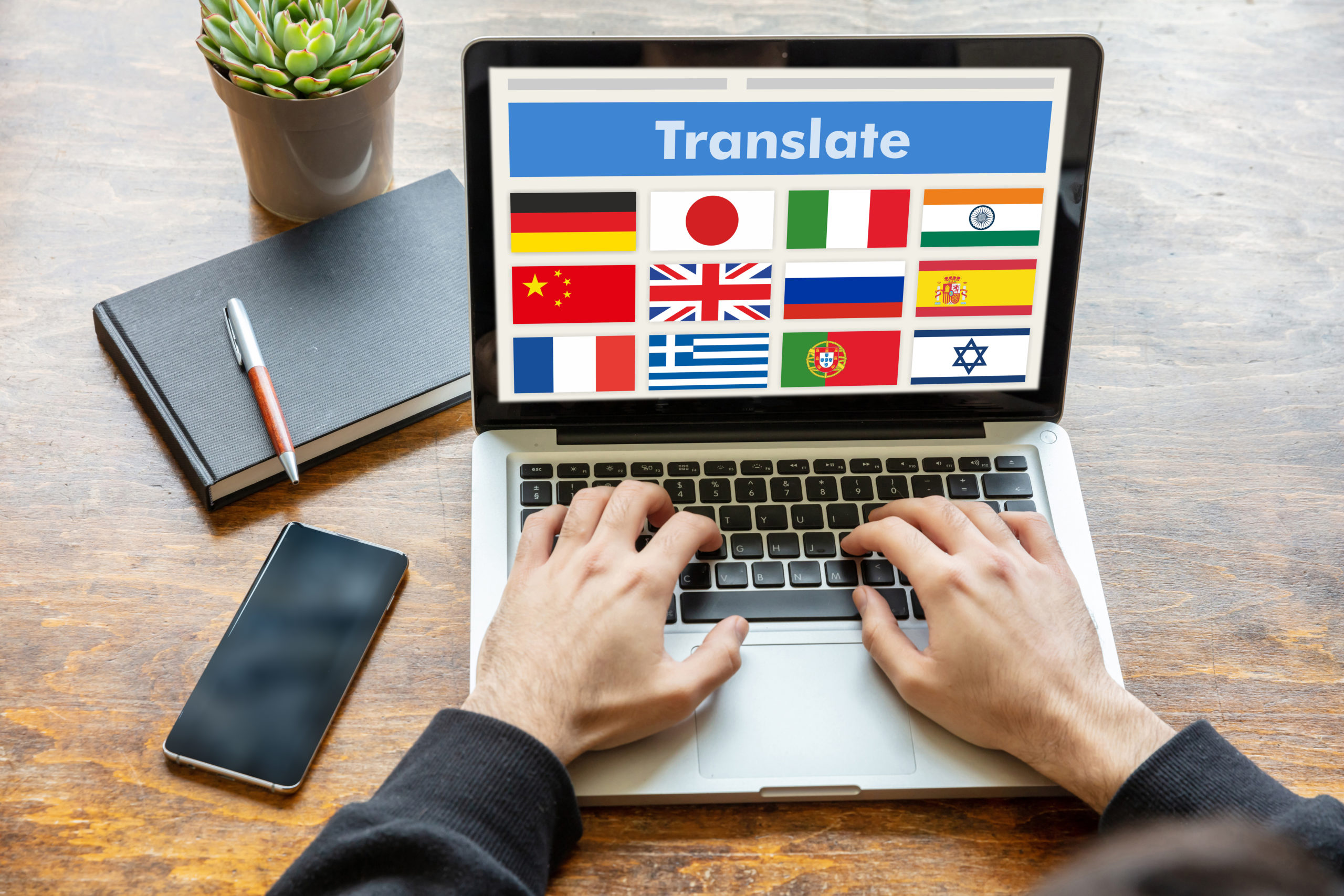Understanding language trends across geographies and industries can help companies target their translation and localization strategies and budgets to better effect. We set out our seven trending languages and explain why you should consider adding them to your current translation program.

- Arabic
Translation into Standard Arabic is vital for any company seeking to target the many dynamic and growing economies in the Middle East and Africa.
With 274 million speakers, Standard Arabic is the fifth most spoken language globally and a gateway language for any business targeting the booming Arabic-speaking world.
Unsurprisingly, this resource-rich zone is known for its phenomenal energy and construction industries, with the technology and retail sectors also buoyant across much of the region. Arabic-speaking countries represented more than $630 billion in GDP in 2020, while the Middle Eastern economy increased by over 120% in the five years before the COVID-19 pandemic.
Translation plays a critical role in harnessing business opportunities in both public and private sectors in the region and, in particular, online. Internet usage is rising exponentially in the Middle East and Africa, with the translation of online content becoming increasingly critical to trade in the region.
Did you know? Arabic is one of the world’s oldest and most diverse languages with many distinct dialects and written forms. For this reason, an Arabic speaker using a dialect from Egypt would not necessarily find it easy to communicate with an Arabic speaker from North Africa.
- French
French is the second-most widely spoken language in Europe and the lingua franca in many of Africa’s emerging markets. Indeed, more people speak French outside of France than in it today.
With more than 260 million native speakers, French sits seventh on the list of most spoken languages in 2021, just behind Bengali.
But, while it may appear a much simpler language to translate, French, as spoken in France, is very different from the French spoken in Canada and more different again from the dialects used in French-speaking Africa and Asia. Localization is vital, therefore, if companies are to get their messages across to their target markets.
French is an official language of Morocco, the fastest-growing of Africa’s major economies in 2021, and in a wide range of former French (and Belgium) colonies in the region, including Benin, Burkina Faso, Gabon, and Senegal. It is also widely spoken in Vietnam and Cambodia, where proficiency in English outside the tourism sector is low and is an official language of Belgium, Luxembourg, and Switzerland.
Did you know? There are 88 member states of the Organisation Internationale de la Francophonie (OIF), an international organization representing countries and regions where French is an official or customary language or where a significant proportion of the population consider themselves to be francophones.
- German
Germany has the highest growth domestic product (GDP) in Europe; in other words, one of the biggest and healthiest economies in the region. This fact alone makes the country and its language hard to ignore.
As of 2021, there are 145 million speakers of Standard German (Hochdeutsch), of which 95 million reside in Germany. Crucially, the language is one of the three official languages of the European Union (EU), alongside English and French. Now that Britain has exited the EU, the use and influence of both German and French look set to increase.
German is already a target language for many multinational companies. The country is one of the largest exporters of vehicles, machinery, chemical goods, electronic products, electrical equipment, pharmaceuticals, transport equipment, and food products worldwide.
It is also the world’s third-largest contributor to research and development, which makes German translations particularly valuable for innovation-focused organizations, academia, and research institutes in the life sciences sectors.
Did you know? The Bavarian dialect (Bairisch) is not only distinct from Standard German, but it also differs dramatically across the Bavarian region itself.

- Mandarin
With more than 1.1 billion speakers, Mandarin Chinese is unsurprisingly high on the list of languages for translation.
While most speakers live and work in China, the country has emerged as a global power, making it an increasingly important market for Western businesses. Its e-commerce market is the largest worldwide, with more than 50% of retail sales transacted online. At this rate, Mandarin will soon overtake English as the most popular language used on the internet.
Without high-quality and fully localized translations, companies will find it hard to reach this important market. But, there are other reasons for translating and protecting brand assets in the country. If companies don’t check and protect the translation of their brand names, they may find that an opportunistic Chinese business or counterfeiter has got there first.
Did you know? The number of multinational companies looking to recruit Mandarin-speaking executives rose by 35% in the past five years, indicating the importance of language skills for operating in the region.
- Portuguese
While differences in spelling between the Portuguese spoken in Portugal and Brazil have been standardized over the years, colloquialisms and differences in pronunciation still remain. For this reason, many companies choose to translate and localize into two forms of Portuguese (EU and Brazil).
With 258 million native speakers worldwide, Portuguese is the ninth most widely spoken language and the second most spoken language in Latin America (behind Spanish). Not only is it an official language in 10 countries across four continents, but UNESCO considers it to be the European language with the highest potential for growth in South America and southern Africa.
Of particular interest to companies at the moment is the emergence of Brazil as a global economic powerhouse in technology, energy, finance, exports, tourism, and education. Portuguese is also gaining popularity in Asia due to the region’s diplomatic and economic relations with Portugal and Lusophone countries.
Did you know? The market for foreign goods in Brazil is booming, but only a small percentage of Brazilian consumers speak English making translation particularly crucial for companies targeting the country.
- Russian
The size of the Russian-speaking region, its emerging economy, and its natural resources (Russia is the world’s top oil producer) make the language particularly interesting for international businesses.
Spoken throughout central and Eastern Europe and in Russia itself, Russian is the eighth most common language in the world with 258 million native speakers. It is also one of the official languages of the United Nations, the Organization for Security and Cooperation in Europe, and the Shanghai Cooperation Organization, which makes it significant to international relations, diplomacy, and trade.
The Russian-speaking region is also famed for its engineering talent and IT community, making Russian one of the popular languages for scientific and technical literature.
Did you know? The English Proficiency Index rates Russia as a country with low proficiency in English, so translating your content into Russian could be a crucial step for meeting international business goals.
- Spanish
Spanish is the fourth most commonly spoken language after English, Mandarin, and Hindi, with more than 540 million native speakers worldwide.
Providing dedicated content in Spanish will open doors in Spain, in Latin American countries such as Mexico, Peru, Paraguay, and Ecuador, and even in the United States (US), where an estimated 52 million people speak Spanish as their first language. The US has the world’s second-largest economy in the world and its Hispanic population is projected to double by 2050. It is already the second-largest Spanish-speaking country in the world after Mexico.
Translation into (Latin American) Spanish will be an enormously important strategy for companies targeting this significant and growing demographic.
Did you know? Localization is vital when translating into Spanish. There is no such thing as a single global Spanish language, as distinct dialects have evolved in different regions of the world with marked differences in vocabulary, grammar, and levels of formality.
––
Are these languages right for your business?
Translation and localization are crucial to reaching consumers, boosting sales, and growing your business in some of the world’s most important markets. Our top trending languages currently are Arabic, French, German, Mandarin, Portuguese, Russian and Spanish, but deciding which languages (and dialects) to include in your translation and localization program will depend heavily on your company’s geographical presence and business goals.
Contact us today for tailored advice and further insight on building an effective translation strategy.









